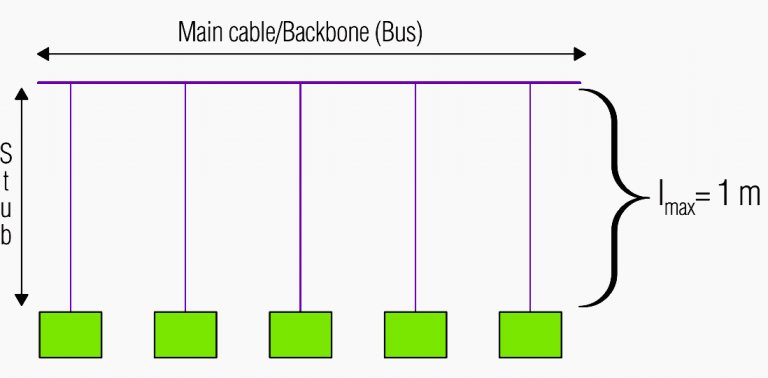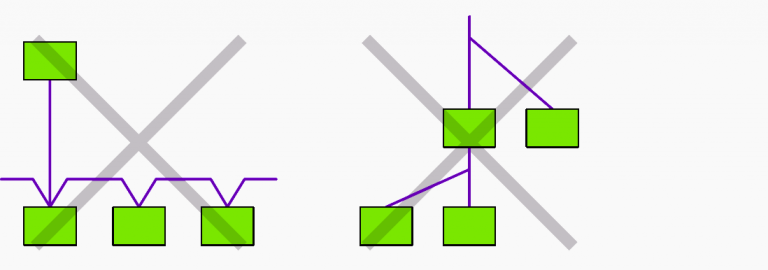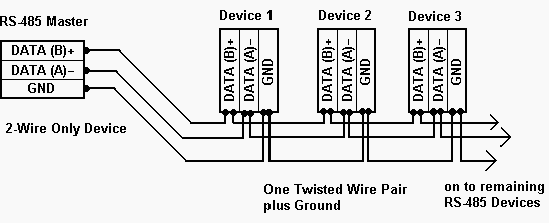RS485 is a serial transmission standard and RS485 cabling is important. An important advantage of RS485 is that you can put several RS485 devices on the same bus. MODBUS is a protocol works on RS485 and between a host (master) and devices (slaves) to access the configuration of the devices and to read the measures. MODBUS messages correspond to relatively simple operations to read and write 16 bit words and binary registers. The host systematically initiates the exchange and the “slave” device answers. The slave doesn’t sent any message before the host requests it.

Unlike what happens in many energy distribution systems, the manner in which the devices are connected in parallel is important in RS485 cabling. The RS485 system used for Modbus communication provides a main cable (Bus or backbone), to which all the devices have to be connected with branches (also known as stubs) that are as short as possible.
 The branches must be no longer than 1200 m at RS485 cabling! Longer branches could cause signal reflections and generate disturbances and consequent errors in the reception of data
The branches must be no longer than 1200 m at RS485 cabling! Longer branches could cause signal reflections and generate disturbances and consequent errors in the reception of data
Maximum device on bus depends on host device. Learn this from device producer.
There is a special RS485 cable on the market. You can use this shielded twisted pair cabels.

The cable shield must be earthed only in one point. Normally, this connection is made at one end of the main cable.
In order to avoid signal reflections, a 120 Ohm termination resistance must be fitted on each end of the main cable. The end resistance must be used only at the ends of the main cable. If the total length of the main cable is less than 50 m termination resistances can be avoided at the ends of the main cable.
Also you can test your modbus communication with similar applications with Modbus Poll

